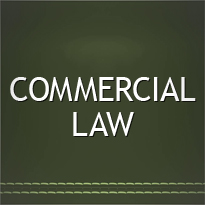G.R. No. 119176 – 379 SCRA 423 – Mercantile Law – Insurance Law – The Policy – Automatic Increase in the Coverage – Documentary Stamp Tax
Prior to 1984, Lincoln Philippine Life Insurance Company, Inc. (now called Jardine-CMA Life Insurance Company, Inc.) used to issue policies called “Junior Estate Builder Policy”. A clause therein provides for an automatic increase in the amount of life insurance coverage upon attainment of a certain age by the insured without the need of issuing a new policy. The clause was to take effect in the year 1984. Documentary stamp taxes due on the policy were paid by Lincoln Philippine only on the initial sum assured.
When the clause became effective in 1984, the Commissioner of Internal Revenue assessed an additional tax on the increased amount of the coverage of the said policies. Said tax was to cover the deficiency documentary stamps tax for said year. The Court of Appeals ruled that there is only one policy and the automatic increase is not a separate policy; that said increase of coverage is not covered by another documentary stamp tax.
ISSUE: Whether or not there is only one policy.
HELD: Yes. Section 49, Title VI of the Insurance Code defines an insurance policy as the written instrument in which a contract of insurance is set forth. Section 50 of the same Code provides that the policy, which is required to be in printed form, may contain any word, phrase, clause, mark, sign, symbol, signature, number, or word necessary to complete the contract of insurance. It is thus clear that any rider, clause, warranty or endorsement pasted or attached to the policy is considered part of such policy or contract of insurance.
The subject insurance policy at the time it was issued contained an “automatic increase clause.” Although the clause was to take effect only in 1984, it was written into the policy at the time of its issuance. The distinctive feature of the “junior estate builder policy” called the “automatic increase clause” already formed part and parcel of the insurance contract, hence, there was no need for an execution of a separate agreement for the increase in the coverage that took effect in 1984 when the assured reached a certain age.
The said increase however is imposable with documentary stamp taxes. The original documentary stamps tax paid by Lincoln Philippine covers the original amount of the policies without the projected increase. The said increase was already definite at the time of the issuance of the policy. Thus, the amount insured by the policy at the time of its issuance necessarily included the additional sum covered by the automatic increase clause because it was already determinable at the time the transaction was entered into and formed part of the policy.
While tax avoidance schemes and arrangements are not prohibited, tax laws cannot be circumvented in order to evade the payment of just taxes. In the case at bar, to claim that the increase in the amount insured (by virtue of the automatic increase clause incorporated into the policy at the time of issuance) should not be included in the computation of the documentary stamp taxes due on the policy would be a clear evasion of the law requiring that the tax be computed on the basis of the amount insured by the policy.


